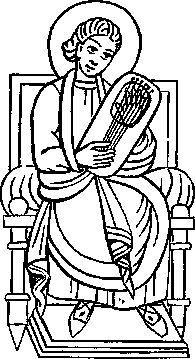Popular Music Of The Olden Time Vol 2
Ancient Songs, Ballads, & Dance Tunes, Sheet Music & Lyrics - online book
| Share page | Visit Us On FB |
|
|
|||
|
BEVERLEY MINSTRELS, ROTE. |
767 |
||
|
|
|||
|
written after the death of Bede, 735, and before the death of Boniface, the apostle of Germany, 755. Lull, who was created a bishop by Boniface, had written from Germany to England for some of the minor works of Bede, and the letter is in answer to that request. Abbot Gutberct sends him Bede's life of St. Outhbert in prose and verse, and excuses himself for not sending more because the winter had been so severe in cold, ice, and tempests of wind and rain, that the hands of the young men were retarded. He asks Lull if it will be possible to send two young men to the monastery, one who can make glass vessels well, and the other skilful in playing the rote. He' reminds him that he had sent to him a present of a gown made of otter-skins, and twenty knives for the fraternity abroad, six years before, and that the receipt of them had not been acknowledged. He hopes his present request will not be treated as trivial. The passage of the letter in which the rote is mentioned is as follows :—" Truly it delights me (meaning " it mill delight me") to have a harper who can play upon that kind of harp which we call rotta, because I have an instrument, but no one skilful in the craft."* The abbot here added the Anglo-Saxon name, because the Latin word cithara answered for several instruments, and would not define which of them he required.
Among the musical instruments which are copied from a manuscript of the ninth century, formerly in the monastery of St. Blaise, representations will be found of the " Cythara Anglica," and of the " Cythara Teutonica." (Gerbert's Be Cantu) ii., tab. 32.) The latter agrees completely with the descriptions given of the rote, and we find the same instrument depicted in Anglo-Saxon psalters in and after the eighth century. The following is a representation of King David playing upon one of these, from an Anglo-Saxon illumination of the eighth century (Vesp., A. i., Cotton MSS.) : |
|||
|
|
|||
 |
|||
|
|
|||
|
» This letter is printed among theEpistoles S, Bonijacii (Here he writes rottce instead of totta, and so in the fol-
Martyris, Primi Moguntini Archiepiscopi, Germanorum lowing passage.) '* Si grave not sit, et istum quoque
Apostoli, per Nicolaum Serarium, 4to. Moguntise, 1629. mete dispositione mitte." The abbot says he had lived
Epist. 89, p. 123-4. " Delectat me quoque cytharistam forty-three years in the monastery, but evidently he had
habere, qui possit cytharisare in cithara quam nos appel- forgotten his Latin grammar. lamus roiice, quia citharam habeo, etartificemnonhabeo." |
|||
|
|
|||